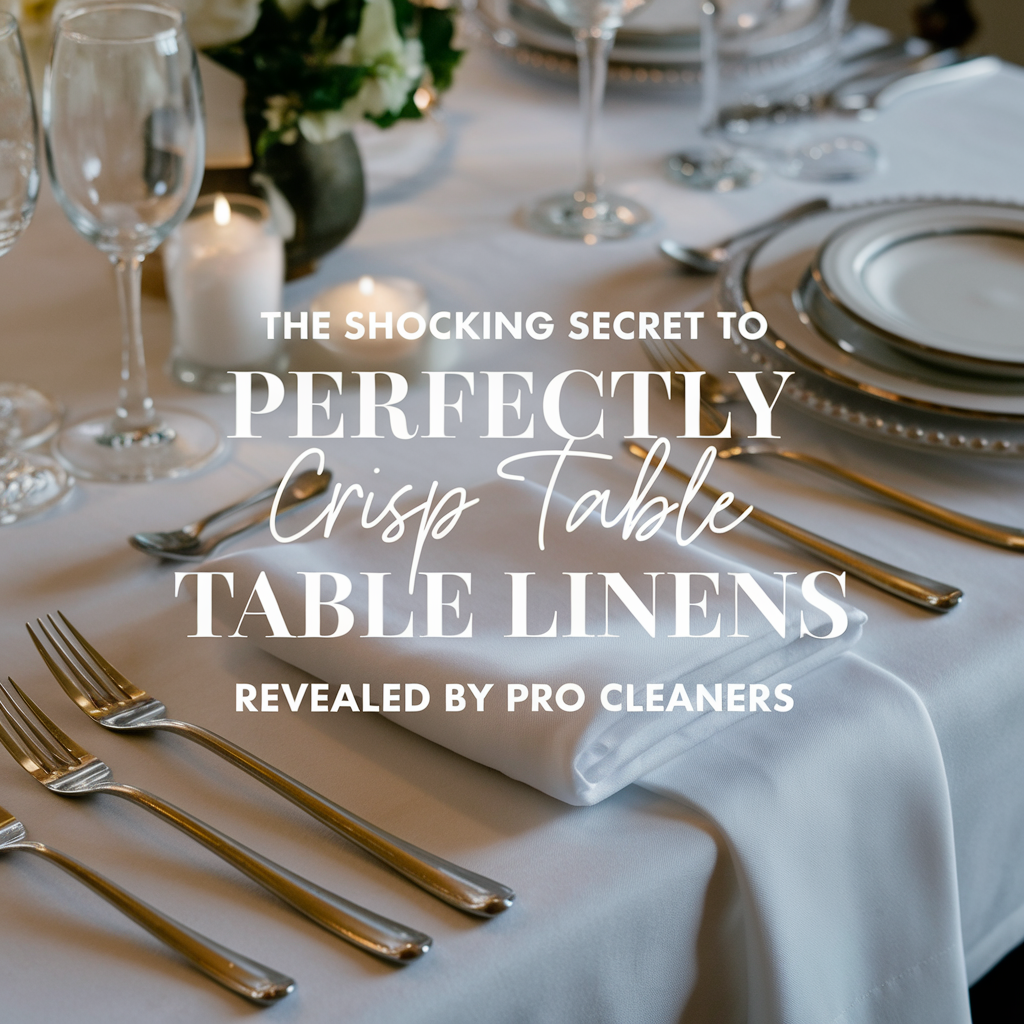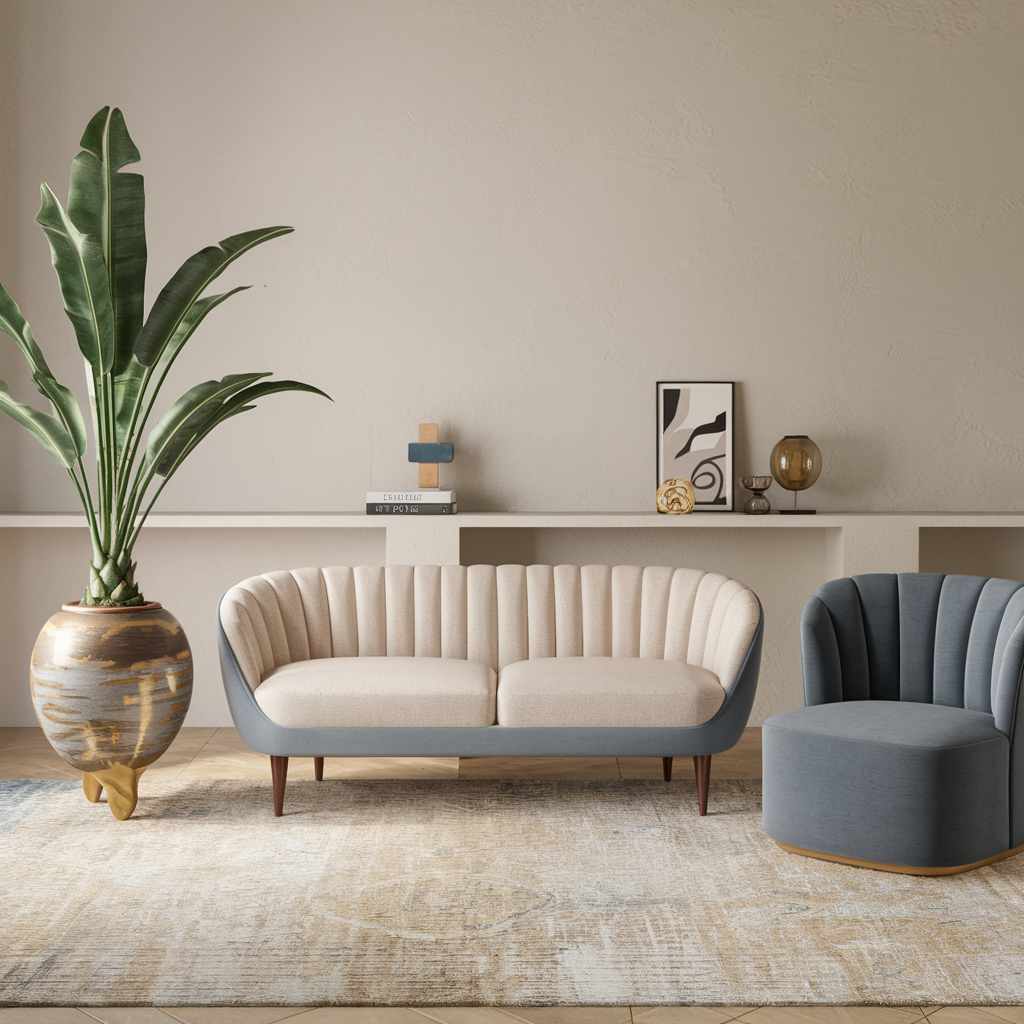Serviette: This is one of the most important players that you do not give credit to when setting the dining table, as it adds a burst of sophistication to every occasion. It applies when you are having a business meal or dinner with your friends. Of course, anytime you are having dinner with your families or for Sunday brunch, a great tablecloth makes a world of difference. But getting that professional, polished look at home is often not an easy thing to accomplish. Do not worry, professional cleaners have decided to share some of the best practices on how to make your table linen as clean as possible to make your guests appreciate it.
In this article, we reveal these secrets progressively, from cleaning up to storage. So, without further ado, it is time to venture into the technique of mastering those tablecloths.

Why It Is Important To Have Perfect Table Linens
Now that we’re ready to unveil the techniques, let’s first justify why perfectly crisp table linens are important
- Aesthetic Appeal: Well-ironed fabrics give your table a special touch of style and that is why smooth fabric on the table is the best.
- Hygiene: Of equal importance, cleaning as well as washing bed clothes to provide hygienically conducive table settings among other amenities.
- Durability: Newer linen is usually costly; proper care makes the linen garments last longer and hence will not require you to spend more.
How To Achieve Perfection Step By Step.
Step 1: Choose the Right Fabric
The basics for crisp linens are, of course, in the material used.
- Best Choices: Some fabrics include cotton, linen, or any combination of cotton linen materials.
- Avoid: Natural fiber fabrics due to their ability to pill or shrink when used frequently and take a new shape.
- Pro Tip: Stainless Wood or pre-shrunken or color-fast materials are less troublesome and guarantee good results.
Step 2: Wash with Care
It's, therefore important to wash correctly in order to protect the fabric and to give it the right touch as linens for a smooth finish.
- Pre-Treat Stains: Cup stains should be washed right away with a mild strain reliever or baking soda concoction.
- Use Mild Detergent: This is because strong detergents can relax fibers and also remove color.
- Set the Right Temperature: Cold water for dark colors and black clothes.
For the darker linens, you have to wash them with cold water so they will not turn light in color.
- Choose a Gentle Cycle: A gentle cycle has less stress on the fabric and reduces wear and tear.
- Skip Fabric Softeners: Rather, pour white vinegar into the washing machine during the rinse cycle for the soft feel of the clothes.
Step 3: Master Drying Techniques
Correct drying in blanchers can help reduce those unwanted wrinkles and shrinkage.
- Air Dry: Lay linens flat or hang them on a line to keep the cork-like texture of the linens.
- Low Heat in the Dryer: Option for lowest heat setting when using a dryer to get linens out while still slightly wet.
- Pro Tip: Do not overdry because it stiffens the articles and pulls the fibers when wrinkle making ironing even more difficult.
Step 4: Iron Like a Pro
But here, ironing is where your linens come to life.
- Start Damp: Also, it is easier to iron damp linens, and they come out significantly better.
- Use the Right Heat Setting: High heat for linen fabrics and Medium to high for cotton.
- Iron in Straight Lines: Do not pull the iron over the fabrics as it will stretch and as well drag it in straight, consistent motions.
- Protect with a Pressing Cloth: When ironing linen wear a thin cotton cloth between the iron and your linen in order to avoid scorch marks.
- Pro Tip: For embroidered linens, iron on the backside to prevent ruining the prints.
Step 5: For Some Extra Crunchiness, Incorporate Starch
A bit of starch whilst ironing is a great way to give it that professional look.
- Spray Starch: Spray water on the fabric while ironing so that you can make it stiffer.
- Homemade Option: A solution of cornstarch, one tablespoon in one cup of water, will more than suffice, and they should be liberal in its application.
Step 6: Store Smartly
Storing your linens properly lets them remain fresh and prevents them from developing wrinkles.
- Fold Neatly: Tuck the linens along the seams; this way, you will be reluctant to crease them.
- Use Breathable Bags: A cloth or muslin bag is also ideal for storing the linens, or you could use acid-free tissue paper.
- Avoid Plastic: When for example, plastic is used in the making of furniture, it causes mildew and discoloration because it easily traps moisture.
- Rotate Regularly: Update the usage of your linens in circulation so that they do not wear out unevenly as a result.

Common Mistakes to Avoid
To keep your linens in pristine condition, avoid these common errors:
- Overloading the Washer: This hinders getting to clean the towels to completion and leads to much wrinkling of the fabric.
- Using Harsh Chemicals: Products containing bleach and other strong detergents must not come in contact with your delicate fabrics.
- Skipping Regular Maintenance: Stains and dirt that remain for a long period are more difficult to treat.
Last Minute Sensor For Wrinkle Protection
If you find wrinkles just before an event:
- In case of the occasional wrinkles, use the fabric steamer.
- Spray the fabric with water and smooth out the fabric with a boiling iron.
Tips For Special Occasions
Planning to make your guests feel more like royalty when you have to host that fancy dinner party?
- Layer Your Linens: Use a base tablecloth and layer a runner or a topper for an added level.
- Match Napkins and Tablecloths: He or she should also make sure that the fabrics used are well-coordinated so as to come up with an elegant-looking wardrobe.
- Use Seasonal Accents: Incorporate accessories on the topics of themes or chop seasonally.

Conclusion
Cleaning dry white clothes for the table makes a drastic change to the beauty that comes with any meal. As you will glean from the following suggestions from professional cleaners, you can get restaurant-quality linens at home without having to break the bank.
Stitching to choosing the right fabric, the right kind of buttons, the correct selection of threads, and even ironing is part of perfecting the process. The problem is to make these habits your rule and then your table will always look presentable.
FAQs
Q1: What is the best way to keep table linens wrinkle-free?
A: The best way to keep table linens wrinkle-free is by properly washing, drying, and ironing them. Pro cleaners recommend using a light starch spray and folding linens carefully to avoid creases.
Q2: Can I achieve crisp table linens without an iron?
A: Yes! You can achieve crisp linens without an iron by using a fabric steamer or a wrinkle-releasing spray. Some pro tips include hanging linens immediately after drying to prevent wrinkles.
Q3: How do professional cleaners make table linens look so perfect?
A: Professional cleaners use techniques like steaming, light starching, and pressing with heavy irons to achieve that crisp, hotel-like finish. They also fold linens meticulously to maintain their look.
Q4: What type of fabric works best for crisp table linens?
A: Natural fibers like cotton and linen are the best choices for achieving crisp table linens. These fabrics hold starch well and respond better to ironing compared to synthetic fabrics.
Q5: How often should I wash my table linens to maintain their quality?
A: Table linens should be washed after every use to prevent stains from setting. For infrequent use, wash them seasonally to keep them fresh and crisp.
Q6: Is it safe to use starch on all table linens?
A: Not all fabrics handle starch well. Starch works best on natural fibers like cotton and linen. For delicate fabrics, opt for a fabric spray or press with minimal heat.
Q7: Can I prevent table linens from wrinkling while storing them?
A: Yes! Store table linens by hanging them on padded hangers or rolling them instead of folding them. This helps minimize creases and keeps them fresh for your next use.
Q8: How do I remove stubborn wrinkles from table linens?
A: To remove stubborn wrinkles, use a steam iron on high heat or a fabric steamer. For tough creases, lightly dampen the fabric with water or spray starch before ironing.
Q9: Can I use homemade starch for table linens?
A: Absolutely! Homemade starch can be made by mixing cornstarch and water. This is an eco-friendly and cost-effective alternative to store-bought sprays.
Q10: How do hotels keep their table linens so crisp?
A: Hotels use industrial steam presses, high-quality starch, and careful folding techniques to achieve a flawless, crisp finish on their table linens. The key is consistency in care.



